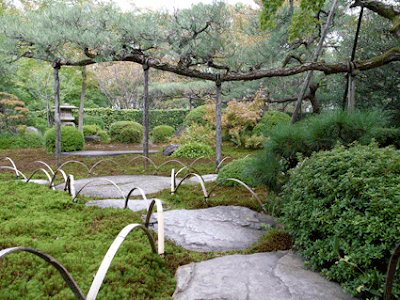
Saturday, 15 March 2008
Wednesday, 12 March 2008
Friday, 7 March 2008
Tuesday, 4 March 2008
More on Trunks


Frozen snow on ash trunks in Sussex, and extraordinarily bendy holm oaks in Provence. Hard to know the history of these holm oaks, perhaps they grew as part of a dense scrub, and have been tidied up for the public- they're at the village des bories, old dry stone shepherds huts, near Gordes.
OK, not really topiary or niwaki, but they could be!
Saturday, 1 March 2008
Dai Mochi


More trunks: this is what happens when you graft berry-bearing bits of Ilex integra into big old trunks (also of I. integra). Like Dai Sugi before, the dai bit means base (referring to the trunk), and shouldn't be confused with another, more common meaning of the word; big, or great.
Top picture at Ise Jingu, bottom one on a nursery in Osaka.
Friday, 29 February 2008
Dai Sugi

After a slightly aimless start, here's the first in a series on trunks: Cryptomeria japonica grown in the dai sugi or kitayama sugi style, at Ise Jingu.
The trees are cut at knee height, and the new growth is 'raised' (the lower branches are removed) mimicking the way the trees are grown in an area of forestry north of Kyoto (Kitayama, hence the name). Because the lower branches are removed every year, the wood never develops knots, and the resulting timber is dead straight and clean. It's tradtionally usd in the tokonoma (family altar)
In the garden, the balance between the big old trunks at the bottom, and the ever-changing arrangement of newer poles above, creates an interesting yin yang sort of thing, a bit ike old coppice or pollard trees in Europe.
Thursday, 28 February 2008


I'm a big fan of plane trees, especially on the continent where they're often pruned for shade.
Aix en Provence, and a road somewhere in Provence.
I wouldn't call these niwaki, but they do something similar, giving the tree an extra layer of character, somewhere in the grey area between nature and man.
Subscribe to:
Comments (Atom)


